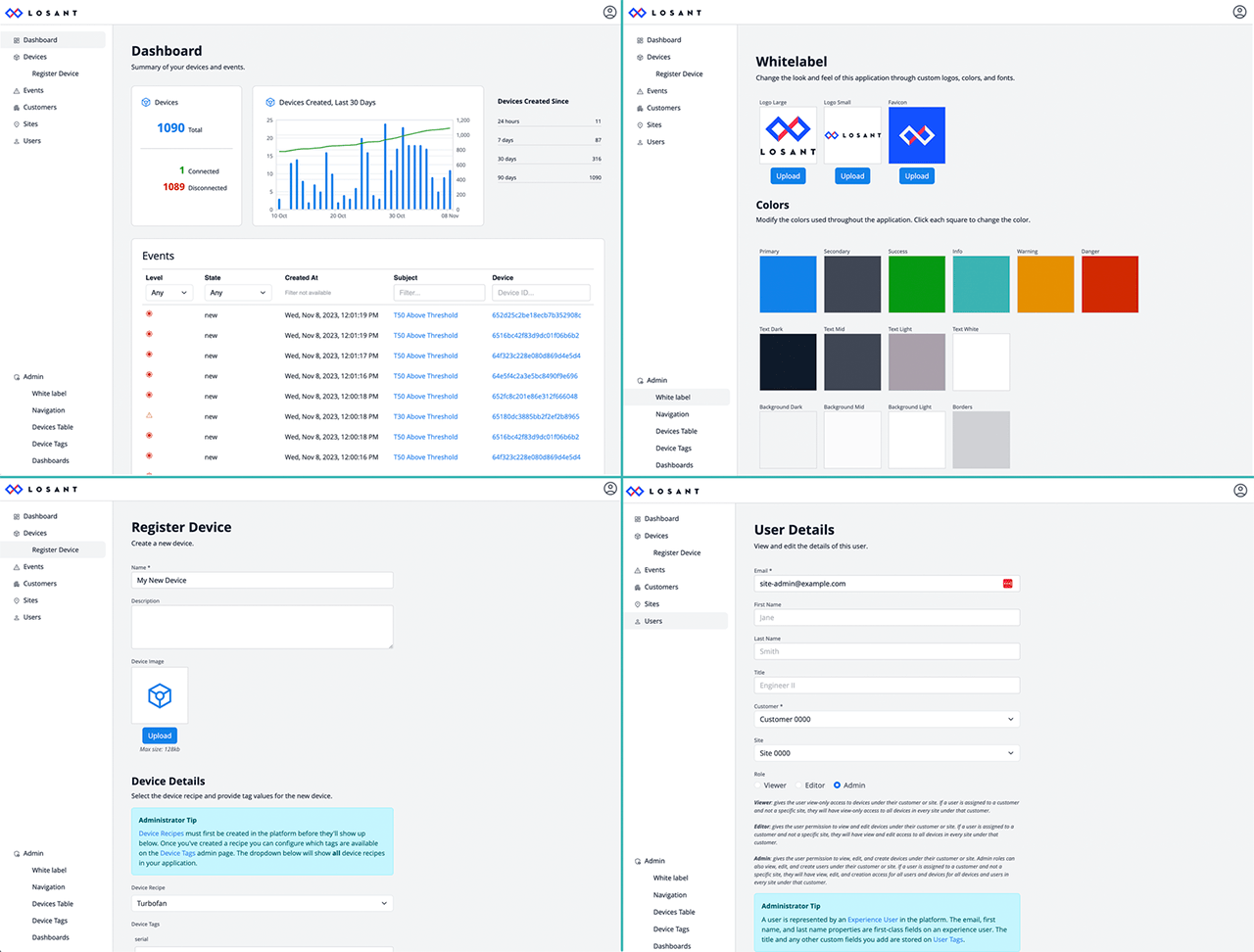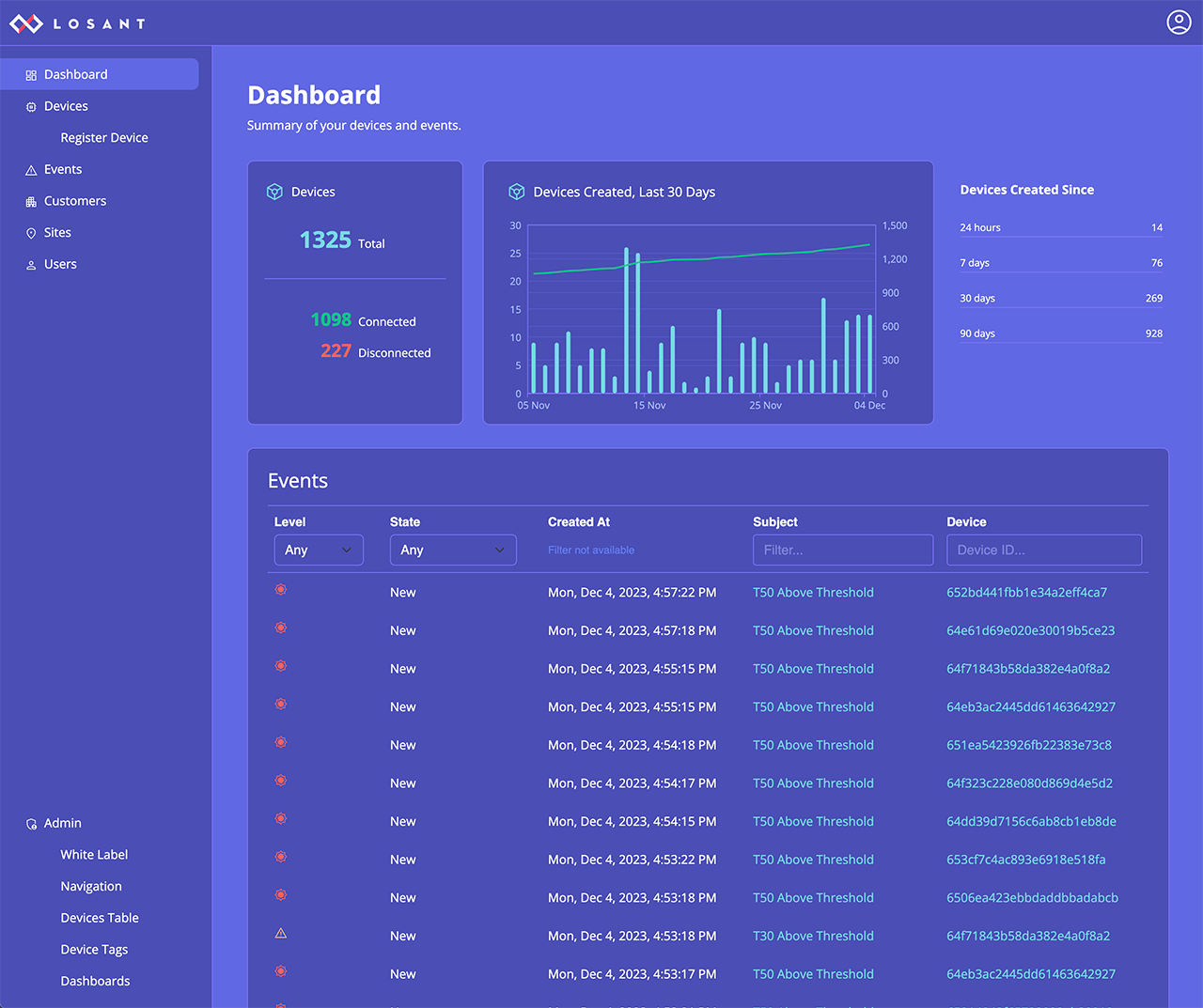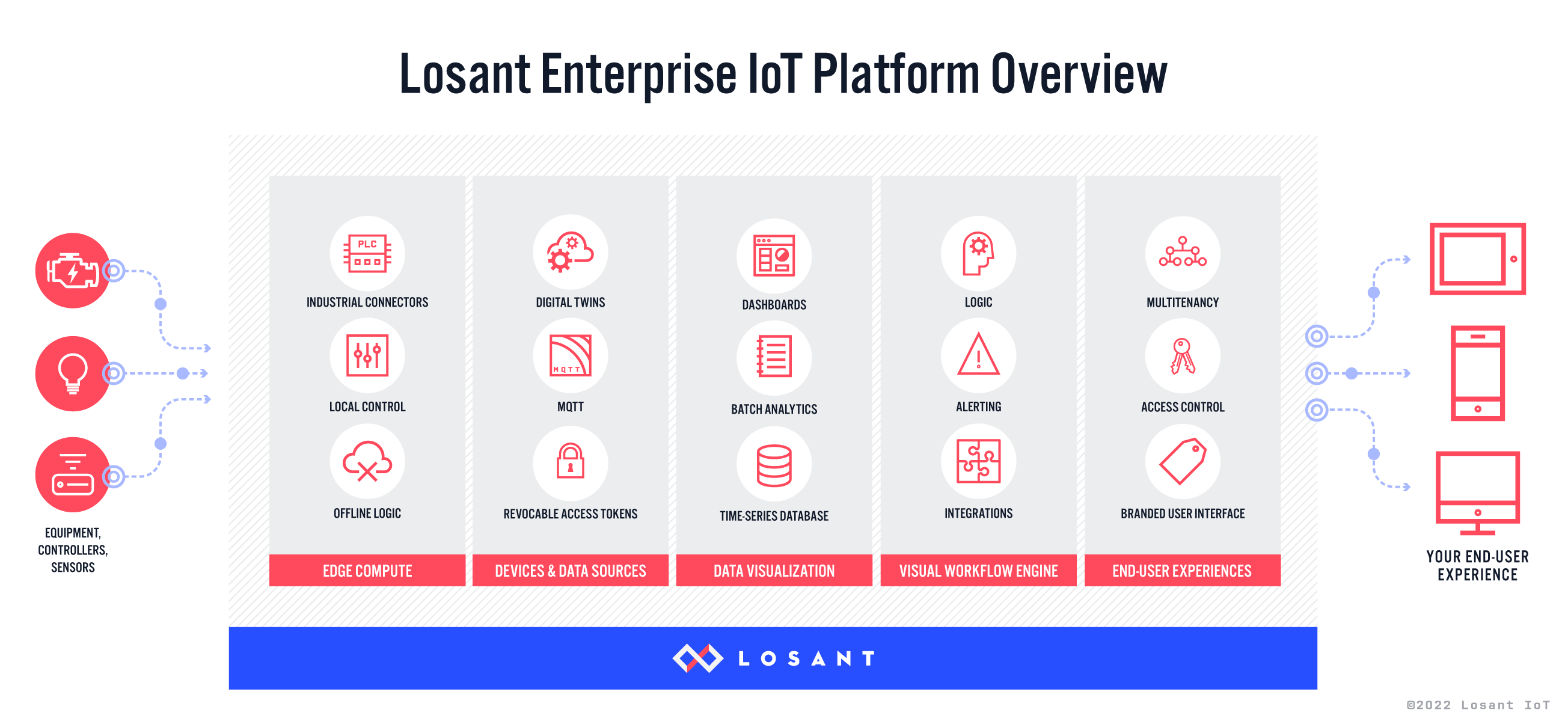On February 15th, 2024, it was announced that Microsoft is retiring Azure IoT Central. Microsoft has since backtracked a little, but the ultimate fate of IoT Central is still unclear. General consensus appears to be that IoT Central will still be retired, but the exact timeline may differ from the original announcement.
While it's certainly frustrating to learn a service you rely on is being retired, Microsoft's three-year timeline provides ample time to migrate. The question now is where to go?
Losant's Connected Product Foundation
Losant's Connected Product Foundation (CPF), released in December of last year, was partially inspired by Azure IoT Central, but also fixes its limitations.

Like IoT Central, the CPF delivers a turnkey application to quickly manage and visualize your devices and telemetry data. Unlike IoT Central, the CPF's implementation is completely open and available for you to modify. When you start an application from the CPF template, every resource that makes up the CPF is imported into your application. This means you can modify and expand any part of the CPF to meet your specific requirements.
The CPF also includes a significant amount of built-in customizability. Things like white labeling, nav items, dashboards, and even what columns appear in your devices table, can all be changed without writing any code.

Delivered On Losant's Unified IoT Platform
Another challenge with Azure IoT Central is that it wasn't fully integrated with Azure's other services. It wasn't even fully integrated with Azure's other IoT-specific services. This problem isn't unique to Azure and you'll find that IoT services from most major cloud vendors are similarly disjointed.
This is a remnant of how the hyperscalers originated and continue to operate. They're a collection of individual services being developed and maintained by separate teams. This strategy doesn't work particularly well for IoT.
IoT applications require many tightly coupled services all unified under a single IoT platform vision. This is Losant's approach.

Losant started before cloud vendors had any IoT-specific offerings. The entire platform was purpose-built for IoT and all functionality - from edge compute to end-user experiences - is tightly integrated for a unified developer experience. Our customers get to focus on building their solution and not waste time and money integrating services.
The Connected Product Foundation is a very small piece of Losant's overall platform. In most cases, Losant's functionality completely replaces the entire suite of IoT-specific services provided by cloud vendors (MQTT broker, time-series database, rules engine, and much more).
Losant for IoT, Azure for Infrastructure
Despite retiring IoT Central, Azure is still an extremely capable infrastructure provider with a large catalog of services. Losant has many cloud deployment options and multiple direct integrations with cloud services.
It's common for customers to deploy Losant on their own Azure infrastructure. This lets you use Losant for IoT while directly integrating with any number of additional services that make up your overall cloud strategy. For example, you may have an Azure SQL database for customer information and your IoT solution also needs access to that data. Losant's built-in SQL Node and drag-and-drop Workflows makes it extremely easy to integrate this data into your IoT solution without writing any code.
Losant's MQTT Integration allows you to continue using Azure IoT Hub for device management and device-to-cloud communication. Losant can directly subscribe to IoT Hub to receive your existing device data. This greatly reduces the complexity when migrating away from Azure IoT Central to Losant.
Next Steps
Losant provides a no-cost developer sandbox where you can begin exploring the platform. The Connected Product Foundation application template is available for sandbox users and contains simulated devices so that you can evaluate its functionality without connecting physical devices.
To get a more in-depth overview of the Losant platform, please contact us to schedule a conversation with one of our team members.
